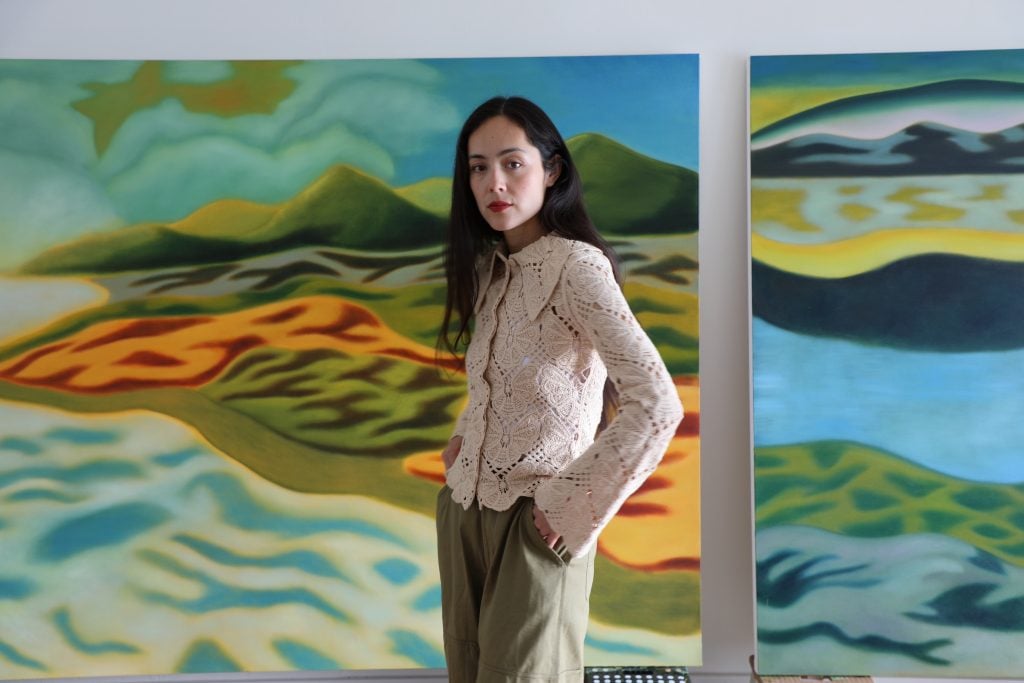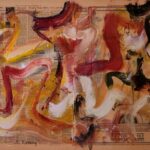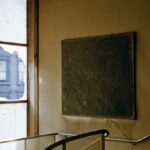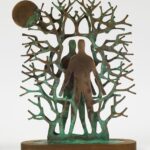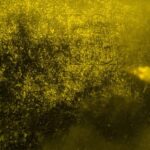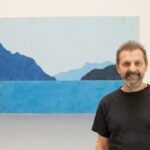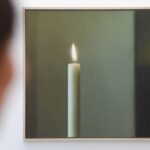“For a long time, I was obsessed with Georgia O’Keeffe,” said artist Camilla Engström during a call from her California home. “I love her art and I love the way she dressed, the way she lived. I wanted to be her I think.”
Engström, who was born and raised in Sweden, paints metaphysical and sensual imaginary landscapes in a psychedelic range of colors, surrealistic terrains with supple crests and valleys that have earned comparisons to O’Keeffe’s Southwestern vision from almost a century ago. “Southwestern deserts fascinate me. They feel timeless,” Engström explained, “As a foreigner, there is really nothing like it.”
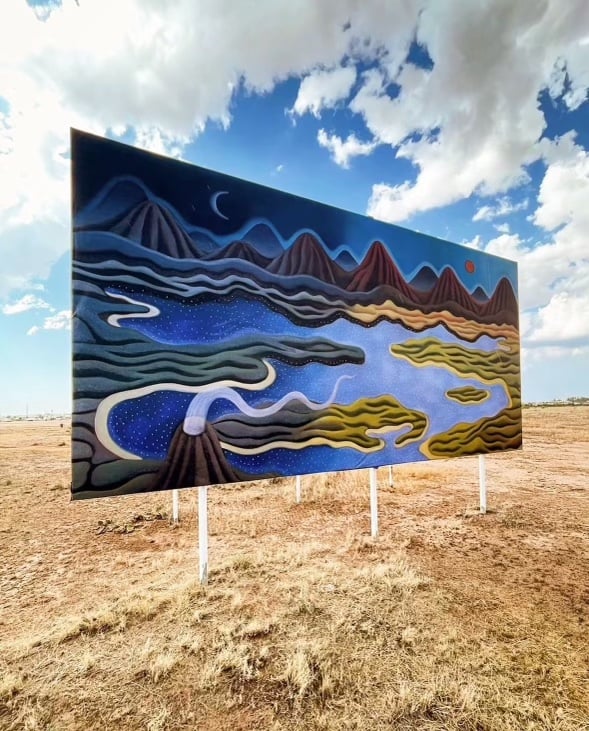
Camilla Engström’s work, installed on a billboard in Marfa, Texas, 2024. Courtesy of Marfa Invitational.
Earlier this year a billboard adorned with one of Engström’s landscapes was installed in Marfa, Texas, as part of the Marfa Invitational–creating a dialogue between the artist’s work and the landscapes that have long inspired her. “I think it looked so cool,” Engström said with a laugh. A self-taught painter, she admits she enjoys encounters with art beyond gallery walls. Aside from O’Keeffe, she’s also earned comparisons to Hilma af Klint, a fellow Swede and a 19th-century visionary artist, whose works were intended for an immersive art chapel. “Her works were very important to me growing up,” said Engström.
But Engström’s own works have found plenty of institutional support in their own right. Right now, her work is on view in the group show “Dog Days of Summer” at Timothy Taylor in New York, alongside legendary artists from Pablo Picasso to Kiki Smith. Her work has been the focus of solo shows with Carl Kostyal, Over The Influence, and KONIG, among others. Currently, she’s preparing for a forthcoming solo exhibition with Carl Kostyál in September.
For the last five years, the artist has been working without breaks. “I find it very hard to turn things down,” she admitted. That drive is rooted in the struggles of her early artistic journey. Moving to New York from Sweden to study at the Fashion Institute of Technology School in the late aughts, Engström took work as a fashion assistant but was disillusioned with the field. To make ends meet, Engström started making embroidered clothes, drawings, and even stickers and candles, which she sold online and through social media. “I wasn’t thinking of myself as an artist. I was thinking more as an entrepreneur,” she said. “I was just trying to get by, not knowing what I wanted to do.”
On her social media, Engström adopted an alter-ego, “Husa” (meaning housemaid in Swedish), whose drawings she began to post online, too. “This was around the time Instagram first became a thing. I was posting my drawings. I didn’t have any followers. I didn’t feel weird since I had nothing to lose,” she recalled. Soon enough other artists began to comment on the drawings, asking if they were available for sale. “The first drawing I sold was for $40,” she recalled, “I thought it was so expensive, but I needed the money.”
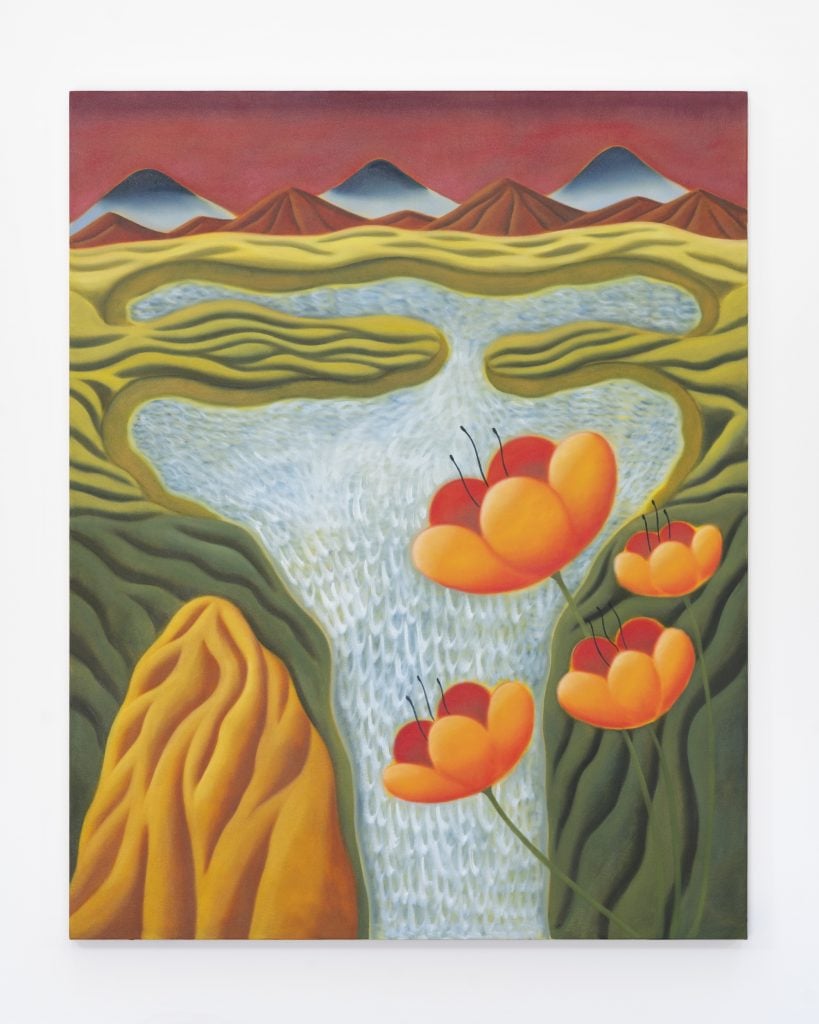
Camilla Engström, Reaching For Summer. Courtesy of the artist.
From those early drawings, Engström began a decade-long journey of artistic exploration, teaching herself how to paint through trial and error. “Eventually, I got a studio with no windows in a basement. It was an open studio that I shared with two guys,” she said. “It wasn’t an inspiring space at all, but I was in love with having my own space. It made me think I could maybe become an artist.”
Engström says she only really began to “feel ready” as an artist after making the leap to oil painting a few years later. “I felt like something was going to open up if I did, but I was so scared. I’m not formally trained as a painter so there’s been a lot of mistakes,” she said, smiling. After making a few small works in oil (even working with water-based oil, typically used by children), she stapled a large canvas to her wall because she couldn’t afford stretcher bars. She painted her first large-scale oil landscape and, as she’d hoped: “Something shifted for me then.”
Over the years, Engström’s works have continued to find new forms. Her early love landscapes of burnt oranges and reds for the desert, have, more recently, given way to more vegetal greens and lush hues. She sees something uniquely Swedish in these newest works. Her father (who is of Swedish background, and her mother is of Chinese descent) send the artist clips of films and photographs from his childhood around Sweden. “My father was sick at the time. Taking his time to sending me those pictures while he was sick, meant so much to me,” she said.
Another recent influence has been the work of Swedish landscape artist Helmer Osslund, who painted at the turn of the last century. She discovered his work at a museum on a recent trip back to Sweden. She was captivated by the artist’s pulsating sense of line and intuitive use of color.
“On some level, my work has always been very inspired by Sweden, but it’s always changing and I never I never sketch,” she said “All these images come together in my mind,” she said. “It’s a forever dream to move back, but I think maybe if I did move back, I wouldn’t feel the same. Part of it is dreaming about home,” she said. Today, Engström paints from morning to early afternoon, with large furniture brushes she feels are “just the right size.” She still posts her work on her Instagram, and, for several years, posted infectiously happy videos of her dancing in the studio. “I want to make people feel happy,” she said, “Though I think my dancing did confuse some people”
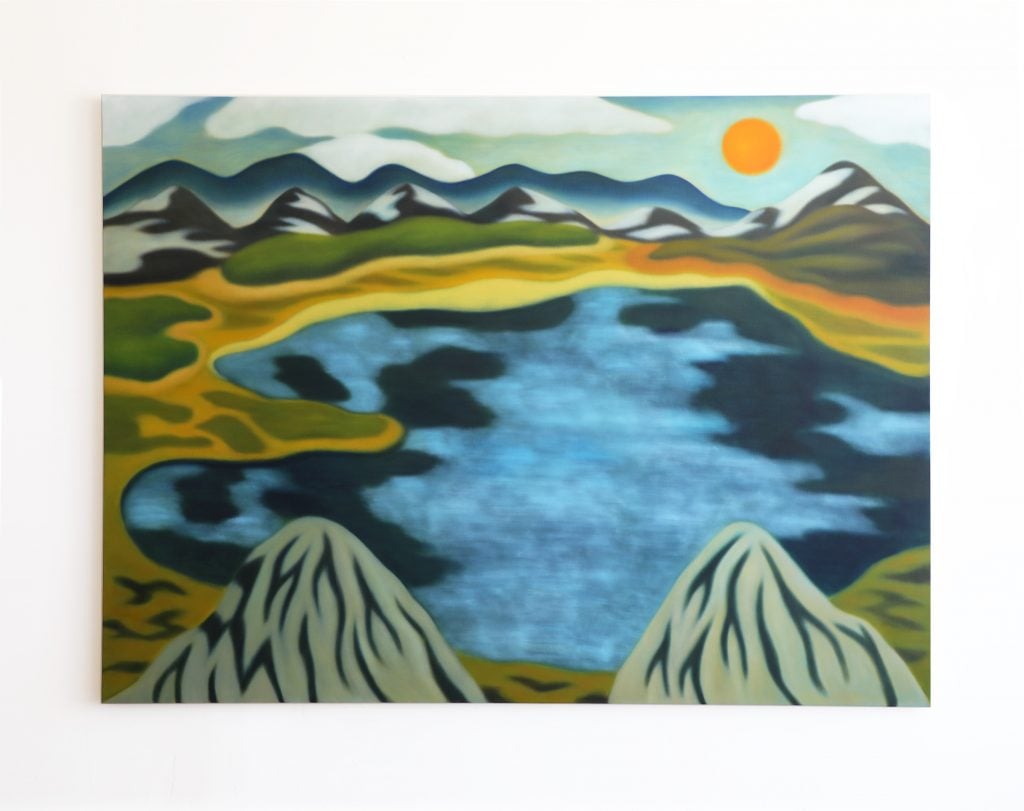
Camilla Engström, Morning Hike (2024) Courtesy of the artist.
California’s Central Coast terrains have also been seeping into her latest compositions, too, if even subconsciously. For the past few years, the artist and her boyfriend have been living on the Central Coast, renting a local empty storefront as a studio, while a home Engström had purchased in Los Angeles has been renovated.
“For me, I thought the paintings look like Sweden, but a Swedish friend said they look like California,” she said “It’s a mix of both worlds.” Lately, Engström has been contemplating her next move, her next horizon. The home in Los Angeles is finally ready to move in, but Engström isn’t quite prepared to leave behind her country life.
“I’m always dreaming about the future and who I’m going be in the future,” she said wistfully, “But being here, meeting ranchers and cowboys and animals, I don’t want to leave. I’ve started gardening, so my dream now is that I’m going to make a life up here where I’m a painter and a gardener. Maybe I’ll even get some chickens, too.”
Follow Artnet News on Facebook:
References: this article is based on content originally published by Katie White on Artnet. You can read the full article here.
